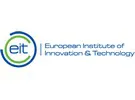€1.3 million has been secured to develop a tool for identifying the most promising carbon dioxide capture and utilisation technologies. The significant financial support, announced at a launch event on 11 April, comes from the Global CO2 Initiative at the University of Michigan and EIT Climate-KIC, Europe’s main climate innovation initiative.
Carbon dioxide capture and utilisation technologies aim to remove greenhouse gas from the atmosphere and turn them into useful, profitable products. Such technologies range from reforestation to direct air capture and further use of the captured biomass or carbon dioxide.
The tool, the Techno-Economic and Life Cycle Assessment (TEA/LCA) Guidelines for CO2 utilisation technologies, is one-of-a-kind in scope and designed to evaluate various approaches to this strategy to mitigate climate change.
The new project to develop the tool – ‘CO2nsistent’ – will run for three years, fund a team of researchers, and seek to deepen and broaden a first generation of guidelines that were established by the initial project partners in 2018. It will also continue to support current industries and researchers developing these new technologies and applications.
Volker Sick, Director of the Global CO2 Initiative at the University of Michigan said: “We have an opportunity to accelerate the development and deployment of CO2 utilisation technologies. This requires well-informed decisions and for that we need to have harmonised, robust assessments to guide research, investment, and policymaking. We must know upfront, before deployment, that new technologies will be carbon negative and dollar positive.”
The joint announcement was made at a workshop that was organised and conducted in partnership with National Energy Technology Laboratory, National Renewable Energy Laboratory, and Volans. The workshop was attended by over 100 CO2 utilisation technology experts, industry representatives, policymakers, and members of the public. Participants set out to explore next-generation needs to inform future metrics, best practices, validation, and other steps toward building a harmonised global toolkit for measuring and reporting on carbon dioxide utilisation or removal.
Comprehensive, consistent, and transparent TEA/LCA assessments, integrated into the policy landscape, will accelerate funding decisions and promote sustainability-driven technology development. Currently, no standardised TEA and LCA methods have been adopted, so studies cannot easily be compared, risking sub-optimal decisions.
Sira Saccani, Director of Sustainable Production Systems at EIT Climate-KIC said: “The ‘CO2nsistent’ project builds on research and innovations previously funded by EIT Climate-KIC. It reflects the need for making existing knowledge and methodologies broadly accessible beyond Europe. Enabling comparability and transparency of a diverse set of solutions at the global scale through factual information will be crucial for regulatory processes, public acceptance and to direct investments to applications with the highest climate change mitigation impact.”
As this nascent technology space continues to rapidly gain momentum among academia, industry and governments seeking solutions to reduce carbon emissions and create new circular business opportunities, these guidelines aim to harmonise approaches to measure further investments and commercialisation. Similar approaches are conducted across many technology sectors, including the early days of electric vehicle research and development and identifying the best battery technologies to advance and scale.
An anticipated end-user and industry supporter of the toolkit, Christoph Gürtler of Covestro, a world-leading manufacturer of high-tech polymer materials, said, “It is my belief that a timely analysis of potentially new processes e.g. on CO2 utilisation using an aligned and harmonised TEA/LCA approach is the key for making the most of given R&D resources – leveraging value and avoiding costly detours.”
The guideline documents the CO2nsistent project produces will be open access, as will a series of example studies. Stakeholders and practitioners will be involved throughout the project in a range of workshops and webinars.
To view the first series of guidelines and supporting partners, please click here.
For more information: European Institute of Innovation & Technology
European Institute of Innovation & Technology
eit.europa.eu
